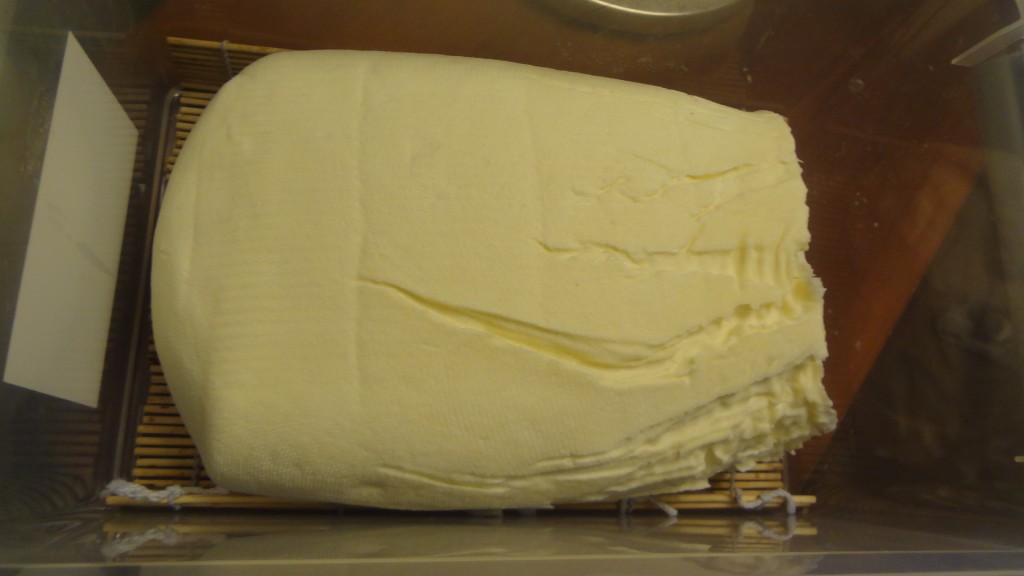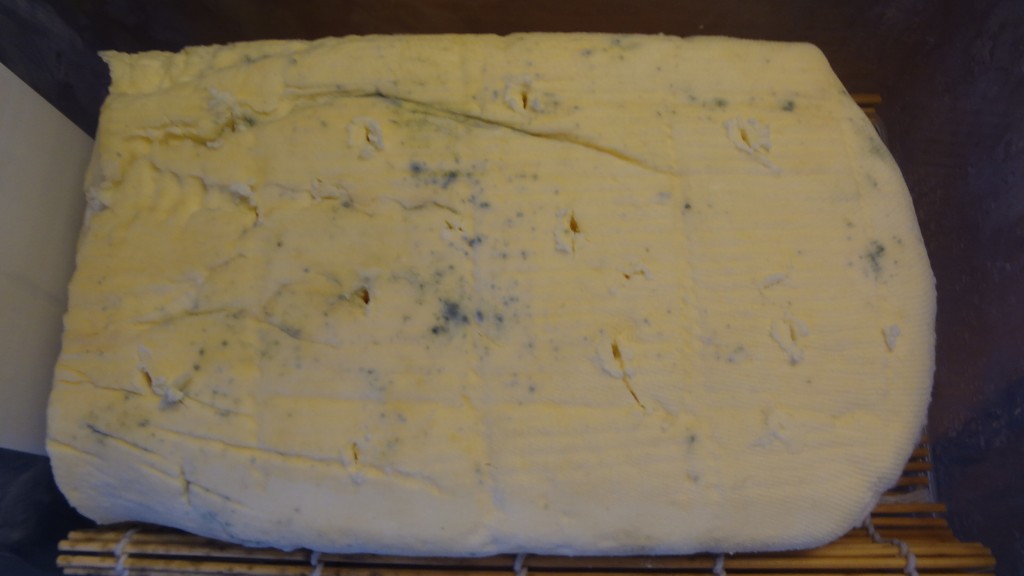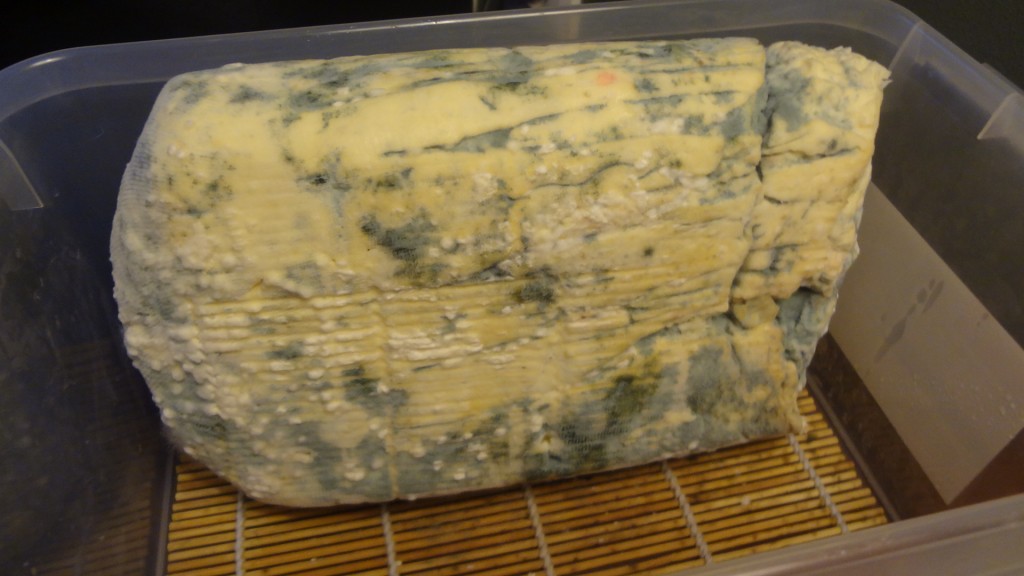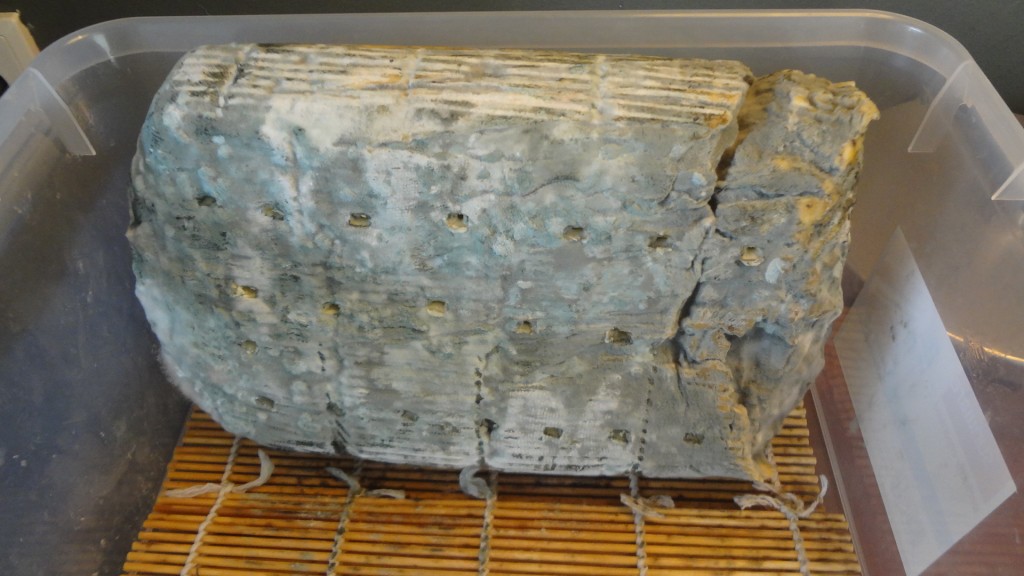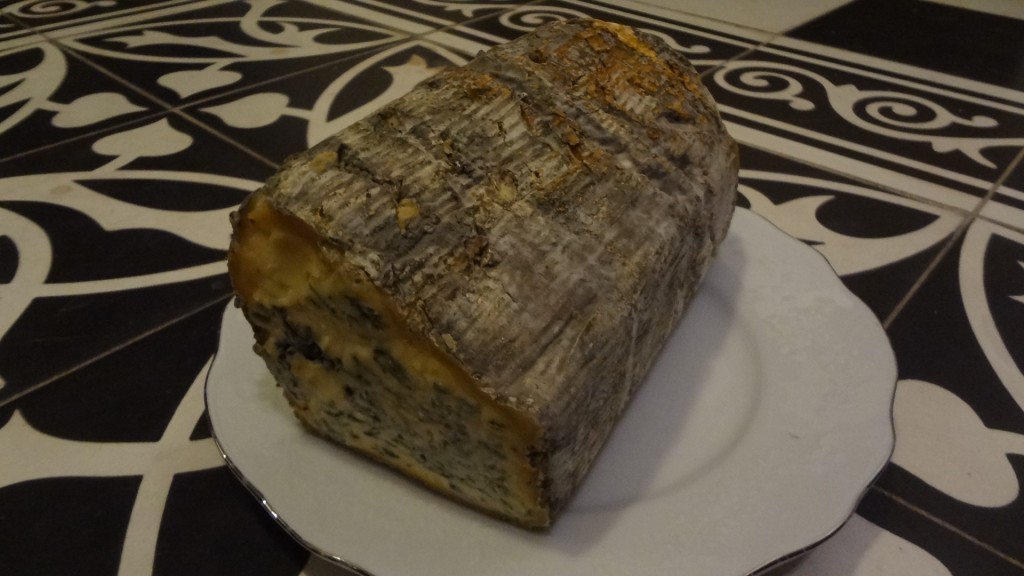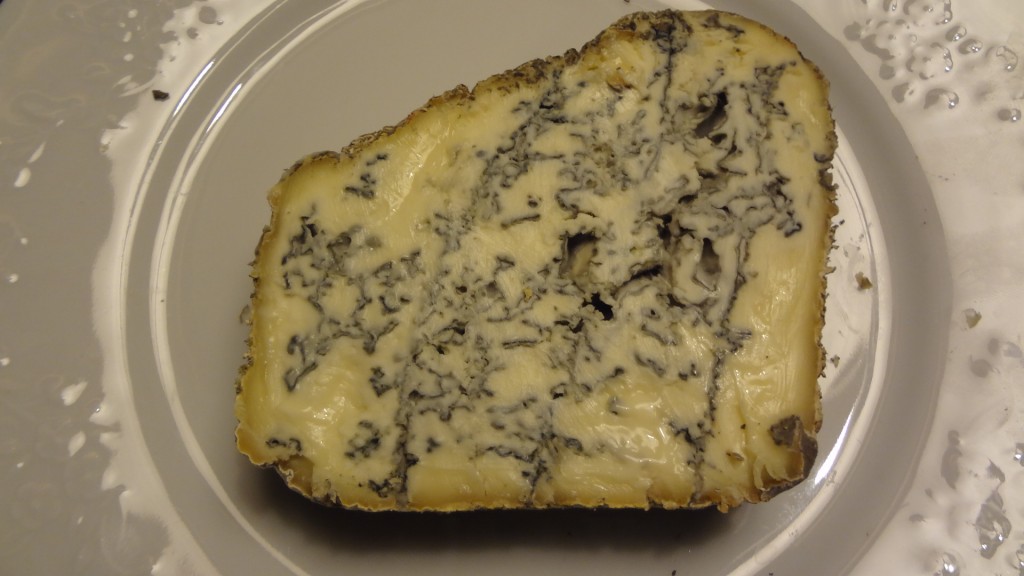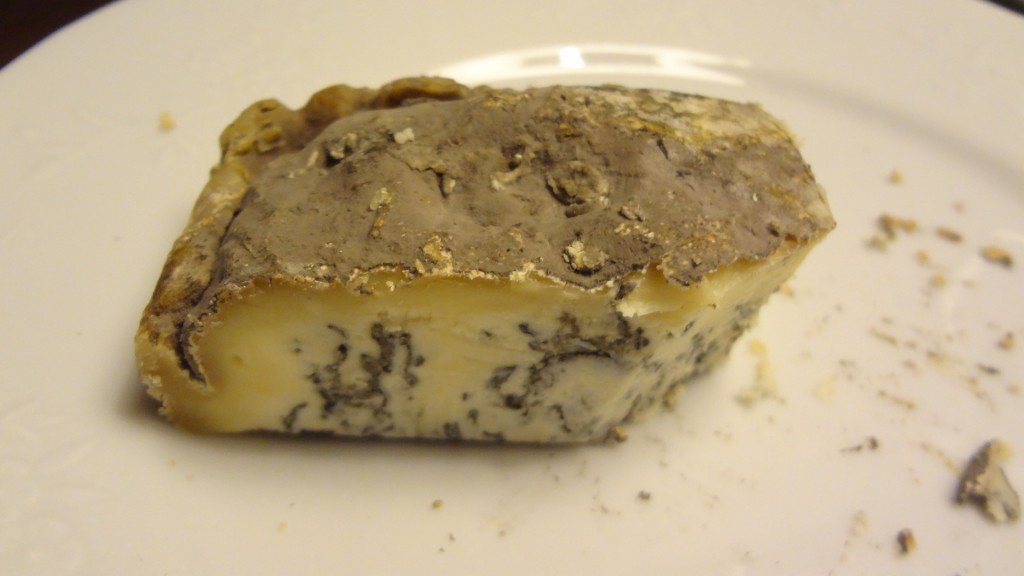One of my favourite cheeses is Fourme d’ Ambert. I will write the recipe as it is in the book but in my own words and give some notes.
It is supposed to be a very high cheese. It is a blue creamy cheese. The taste is not very sharp.
Milk 16L
Mesophylic culture 2,5 mL
Penicillium roquefortii mold powder 0,65 mL
Calcium chloride 2,5 mL
Liquid rennet 2,5 mL
Cool 18% saturated brine
- Sterilize all equipment. Warm milk to 32 C.
- Sprinkle mesophylic culture and mold powder over the milk. Wait 5 minutes. Stir gently.
- Add calcium chloride to a cup with 50 mL of water. Add to milk and stir.
- Add rennet to a cup with 50 mL of water. Add to milk and stir. Keep at 32 C for 1 ½ hours.
- Check for a clean break. If there is no clean break, wait until there is. Cut the curd into 1,25 cm cubes. Wait for 5 minutes.
- Gently stir the curds for 1 hour at the same temperature.
- Remove the whey and ladle the curds in the prepared mold.
- Place the mold in the cheese press. Press at light pressure for 1 hour. Turn the cheese over and press for 6 or 7 hours.
- Remove the cheese from the
press and place it in the brine solution for 12 hours, turning the cheese after 6 hours. - Dry the cheese for 2 days at room temperature. Pierce the cheese with a knitting needle or a skewer.
- Place cheese in the ripening area at 10 C with humidity 90%. Turn cheese daily. Remove any whey from the container. After about 2 weeks a blue-grey moldy crust appears. Continue to ripen for 1 month. The cheese is ready and can be wrapped in foil and kept in the refrigerator for 2 to 3 months.
Notes:
- I make the cheese with 10 litres of milk and adjust the other ingredients in proportion.
- I have a mother culture of mesophylic culture which I keep as ice cubes in the freezer. A few hours before making cheese I put a cube in a cup of milk and let the bacteria defreeze and become active. For this cheese I use 115 mL of this starter for 10 L of milk.
- Since the penicillium roquefortii is meant for a very big quantity of milk I use much less than the recipe prescribes.
- It is a very high cheese. Too high to store in the box that I have. I keep it lying down.
- I use raw milk so I don’t use calcium chloride.
- I cut the curds a bit bigger. I believe that it makes the cheese a bit more creamy.
- Before placing the curds in the mold I let them drain in cheese cloth because it will not fit in the mold.
- You can adjust the amount of blue in the cheese by the amount of holes. More holes is more blue.
- It is possible that the holes in the cheese close. The blue will not form inside the cheese. Make sure that the holes that you make are big enough.
- I make the holes after the blue has formed on the outside. Don’t know if it makes a difference.
- I use baking paper when storing the cheese in the refrigerator. When I start eating it I also use cling film to protect the opened side.
Bon appetit!
Hans

